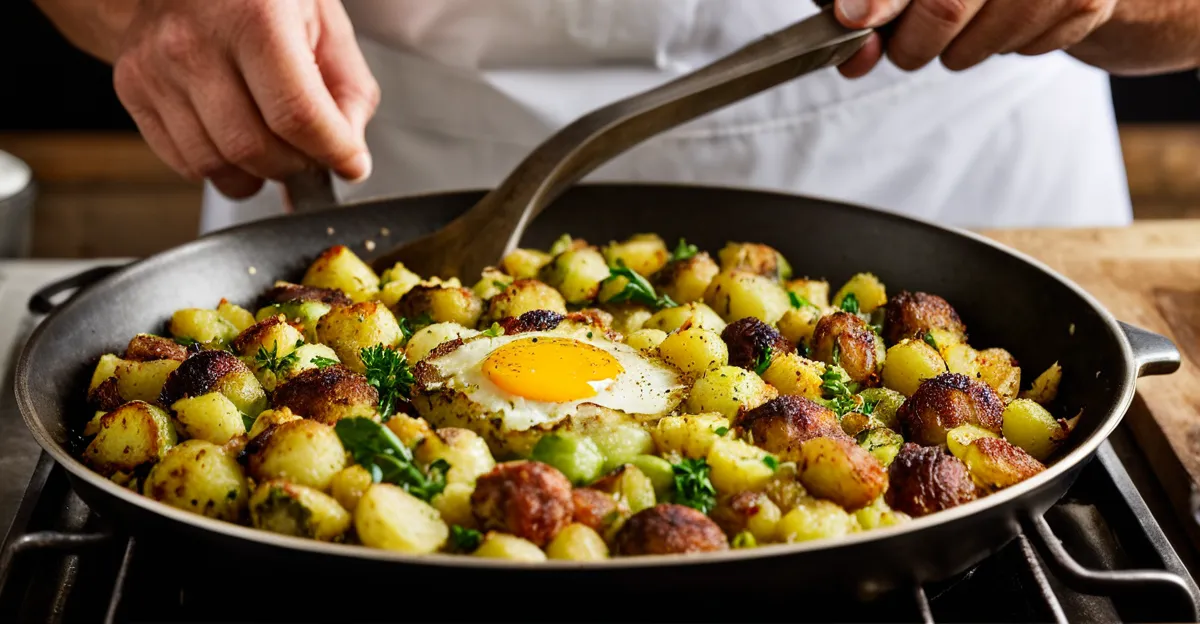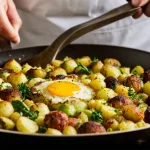Essential Ingredients and Preparation
The core ingredients for a classic bubble and squeak dish highlight the simplicity of traditional British recipes. At its heart, bubble and squeak relies on potatoes and cabbage, which bring together starchiness and a mild vegetal flavor essential for this beloved comfort food. Alongside these, common additions such as onions, carrots, or Brussels sprouts are often included to enhance taste and texture, depending on what’s available and personal preference.
When preparing the vegetables, pre-cooking is crucial. Potatoes are usually boiled or steamed until tender but still firm enough to hold their shape when mashed lightly. Similarly, cabbage and any additional vegetables should be boiled or steamed until just cooked through to avoid sogginess during frying, ensuring the final dish has a balanced texture between softness and a crisp exterior.
In the same genre : What are Some Unique UK Cooking Traditions and Their History?
For the best results with bubble and squeak preparation, chopping ingredients uniformly is key. Finely shredding the cabbage and dicing or roughly mashing the potatoes promotes even cooking. This uniformity helps the mixture to bind well and allows the heat to penetrate consistently, preventing uncooked pockets and achieving the ideal combination of textures typical of traditional British recipes.
Step-by-Step Cooking Instructions
Mastering how to make bubble and squeak begins with correctly combining the prepped ingredients. After preparing the core bubble and squeak ingredients—potatoes, cabbage, and any chosen additions—transfer them into a hot, lightly oiled frying pan. Spread the mixture evenly to form a compact layer; this helps the dish hold together during cooking and makes flipping easier.
Have you seen this : What are some traditional British breakfast recipes?
Cooking times are crucial to developing the signature golden-brown crust. Allow the mixture to cook undisturbed over medium heat for about 8 to 10 minutes. This patiently encourages browning and crispiness on the base. Avoid stirring prematurely, as this can cause the ingredients to fall apart and lose the desired texture.
Flipping the bubble and squeak requires a gentle and confident touch. Once a firm crust has formed, loosen the edges with a spatula, then carefully flip in sections or whole, depending on your pan size and skill. Press lightly to maintain shape. Cooking the second side for approximately 5 to 7 minutes ensures even browning and that the interior remains tender but fully warmed through. This technique forms the foundation of a traditional bubble and squeak recipe appreciated in many British households.
Techniques for Perfect Texture and Flavour
Achieving the ideal bubble and squeak texture hinges on balancing a crispy exterior with a tender, flavorful inside. A key bubble and squeak tip is to use a well-heated pan and enough oil to create a golden crust without burning. Medium or medium-low heat is preferable to avoid overcooking or charring. Patience during cooking allows moisture to evaporate gently, deepening the crispiness. Pressing the mixture lightly with a spatula encourages even browning and helps the dish hold its shape.
Proper seasoning plays a vital role in authentic flavour. Salt and freshly ground black pepper should be added during the bubble and squeak preparation stage to enhance the natural sweetness of potatoes and cabbage. Some cooks also incorporate a touch of mustard or herbs like thyme to complement traditional British recipes without overpowering the core ingredients.
Common mistakes include stirring too often or flipping prematurely, which disrupts the formation of the crust and results in a soggy texture. Ensuring the vegetables are pre-cooked correctly, as discussed, combined with restrained handling in the pan, contributes to the perfect texture and taste balance that characterizes classic bubble and squeak.
Serving Suggestions and Variations
Serving bubble and squeak offers plenty of flexibility while honoring its roots in traditional British recipes. The classic approach pairs the crispy, golden patties with fried eggs and leftover meats such as roast beef or sausages, creating a satisfying and hearty meal ideal for breakfast or brunch. These accompaniments complement the savory flavors and provide protein, making the dish more balanced and filling.
For those looking to explore bubble and squeak meal ideas beyond tradition, incorporating additional vegetables can refresh the recipe and add new textures. Popular choices include peas, leeks, or even sweetcorn, which enhance both color and nutritional value without overwhelming the core ingredients. Such bubble and squeak variations maintain the integrity of the dish while offering subtle twists—perfect for using up seasonal produce.
When it comes to storing and reheating leftovers, keep in mind that texture is key. To preserve the crispiness, it is best to reheat bubble and squeak in a hot pan rather than a microwave. This method revives the golden crust and prevents sogginess. Leftovers can be stored in the refrigerator in an airtight container for up to three days, making this dish a convenient option for quick, flavorful meals on subsequent days.




